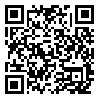BibTeX | RIS | EndNote | Medlars | ProCite | Reference Manager | RefWorks
Send citation to:
URL: http://mcijournal.com/article-1-63-en.html
2- Department of Microbiology, Faculty of Science, Agriculture and new technology, Shiraz Branch, Islamic Azad University, Shiraz, Iran (Ph.D.) ,
3- Professor, Organ Transplant Research Center, Shiraz University of Medical Sciences, Shiraz, Iran. (Ph.D.)
Introduction: Marine actinomycetes have a great potential to produce unique bioactive compounds due to their special adaptation in the harsh ocean environment. The current study aimed to isolate anti-cancer compounds producing actinomycetes from sediments of Harra forests of the Persian Gulf and investigate their potential as anti-breast cancer metabolites.
Methods: In the current study, 40 sediment samples of Harra forests of the Persian Gulf were collected. Samples were diluted and cultured in a starch casein agar selective medium. The strains were isolated and purified, using morphological and microscopic methods. Forty strains were cultured in a starch casein broth and the metabolites were extracted using ethyl acetate. The produced metabolites were extracted from active strains and their cytocidal activities were evaluated against the breast cancer cell line. Finally, effective-metabolites-producing bacteria were identified using the molecular method.
Results: Of the sediments, 186 strains were isolated and identified. Results showed that the isolates had cytocidal activities against the breast cancer cell line. The results also revealed that the 2HP and 4HP strains showed more anti-cancer activities than the others. Results of this study showed that sediments of Harra forests of the Persian Gulf were rich in active actinomycetes, which can be used in the production of new anticancer compounds.
Conclusions: The obtained results give evidence that it is essential to scrutinize these marine microorganisms, which have a great potential to be used in the pharmaceutical fields, in search for new drugs.
Received: 2017/05/6 | Accepted: 2017/06/23 | ePublished: 2017/07/1
| Rights and permissions | |
 |
This work is licensed under a Creative Commons Attribution-NonCommercial 4.0 International License. |





